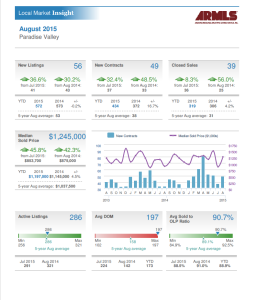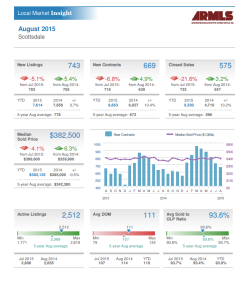 By Joe Szabo, Scottsdale Real Estate Team
It seems that as soon as the first leaf falls, the store shelves are filled with plaid. Something about the cozy wool and colors of traditional plaid patterns screams fall.
You can bring a little warmth into your home with this stately pattern that will last you from fall through winter. Whether you’re looking for a major statement like a plaid chair or a small accessory that will bring in the pattern, you have endless affordable and stylish options.
The best thing about this versatile pattern is how it allows you to mix and match. Pair a large-scale tartan plaid chair with a smaller checked plaid pillow with a tighter pattern, for example.
Classic plaid patterns have stood the test of time. Bringing some plaid into your home is an investment that you’ll enjoy for years to come.
Please note that this Scottsdale Real Estate Blog is for informational purposes and not intended to take the place of a licensed Scottsdale Real Estate Agent. The Szabo Group offers first class real estate services to clients in the Scottsdale Greater Phoenix Metropolitan Area in the buying and selling of Luxury homes in Arizona. Award winning Realtors and Re/MAX top producers and best real estate agent for Luxury Homes in Scottsdale, The Szabo group delivers experience, knowledge, dedication and proven results. Contact Joe Szabo at 480.688.2020, info@ScottsdaleRealEstateTeam.com or visit www.scottsdalerealestateteam.com to find out more about Scottsdale Homes for Sale and Estates for Sale in Scottsdale and to search the Scottsdale MLS for Scottsdale Home Listings.
By Joe Szabo, Scottsdale Real Estate Team
It seems that as soon as the first leaf falls, the store shelves are filled with plaid. Something about the cozy wool and colors of traditional plaid patterns screams fall.
You can bring a little warmth into your home with this stately pattern that will last you from fall through winter. Whether you’re looking for a major statement like a plaid chair or a small accessory that will bring in the pattern, you have endless affordable and stylish options.
The best thing about this versatile pattern is how it allows you to mix and match. Pair a large-scale tartan plaid chair with a smaller checked plaid pillow with a tighter pattern, for example.
Classic plaid patterns have stood the test of time. Bringing some plaid into your home is an investment that you’ll enjoy for years to come.
Please note that this Scottsdale Real Estate Blog is for informational purposes and not intended to take the place of a licensed Scottsdale Real Estate Agent. The Szabo Group offers first class real estate services to clients in the Scottsdale Greater Phoenix Metropolitan Area in the buying and selling of Luxury homes in Arizona. Award winning Realtors and Re/MAX top producers and best real estate agent for Luxury Homes in Scottsdale, The Szabo group delivers experience, knowledge, dedication and proven results. Contact Joe Szabo at 480.688.2020, info@ScottsdaleRealEstateTeam.com or visit www.scottsdalerealestateteam.com to find out more about Scottsdale Homes for Sale and Estates for Sale in Scottsdale and to search the Scottsdale MLS for Scottsdale Home Listings.Mad About Plaid By Joe Szabo, Scottsdale Real Estate Team
 By Joe Szabo, Scottsdale Real Estate Team
It seems that as soon as the first leaf falls, the store shelves are filled with plaid. Something about the cozy wool and colors of traditional plaid patterns screams fall.
You can bring a little warmth into your home with this stately pattern that will last you from fall through winter. Whether you’re looking for a major statement like a plaid chair or a small accessory that will bring in the pattern, you have endless affordable and stylish options.
The best thing about this versatile pattern is how it allows you to mix and match. Pair a large-scale tartan plaid chair with a smaller checked plaid pillow with a tighter pattern, for example.
Classic plaid patterns have stood the test of time. Bringing some plaid into your home is an investment that you’ll enjoy for years to come.
Please note that this Scottsdale Real Estate Blog is for informational purposes and not intended to take the place of a licensed Scottsdale Real Estate Agent. The Szabo Group offers first class real estate services to clients in the Scottsdale Greater Phoenix Metropolitan Area in the buying and selling of Luxury homes in Arizona. Award winning Realtors and Re/MAX top producers and best real estate agent for Luxury Homes in Scottsdale, The Szabo group delivers experience, knowledge, dedication and proven results. Contact Joe Szabo at 480.688.2020, info@ScottsdaleRealEstateTeam.com or visit www.scottsdalerealestateteam.com to find out more about Scottsdale Homes for Sale and Estates for Sale in Scottsdale and to search the Scottsdale MLS for Scottsdale Home Listings.
By Joe Szabo, Scottsdale Real Estate Team
It seems that as soon as the first leaf falls, the store shelves are filled with plaid. Something about the cozy wool and colors of traditional plaid patterns screams fall.
You can bring a little warmth into your home with this stately pattern that will last you from fall through winter. Whether you’re looking for a major statement like a plaid chair or a small accessory that will bring in the pattern, you have endless affordable and stylish options.
The best thing about this versatile pattern is how it allows you to mix and match. Pair a large-scale tartan plaid chair with a smaller checked plaid pillow with a tighter pattern, for example.
Classic plaid patterns have stood the test of time. Bringing some plaid into your home is an investment that you’ll enjoy for years to come.
Please note that this Scottsdale Real Estate Blog is for informational purposes and not intended to take the place of a licensed Scottsdale Real Estate Agent. The Szabo Group offers first class real estate services to clients in the Scottsdale Greater Phoenix Metropolitan Area in the buying and selling of Luxury homes in Arizona. Award winning Realtors and Re/MAX top producers and best real estate agent for Luxury Homes in Scottsdale, The Szabo group delivers experience, knowledge, dedication and proven results. Contact Joe Szabo at 480.688.2020, info@ScottsdaleRealEstateTeam.com or visit www.scottsdalerealestateteam.com to find out more about Scottsdale Homes for Sale and Estates for Sale in Scottsdale and to search the Scottsdale MLS for Scottsdale Home Listings.







 If the first frost is in the forecast, make good use of any remaining blooms or foliage by turning them into an impromptu flower arrangement. Then when you have friends over, they’ll think you just throw these things together on a regular basis.
If the first frost is in the forecast, make good use of any remaining blooms or foliage by turning them into an impromptu flower arrangement. Then when you have friends over, they’ll think you just throw these things together on a regular basis.






